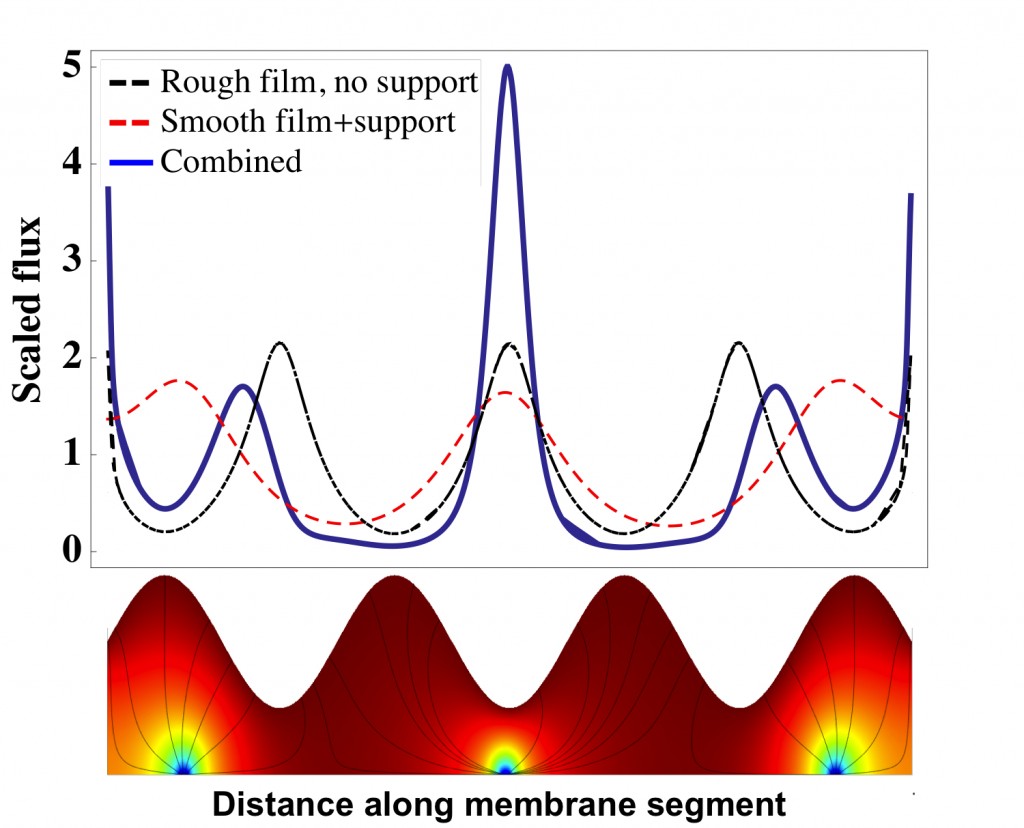Effect of support and film morphology on transport in composite membranes
Transport of water and solutes through polymeric films is fundamental to the separation capacity of modern composite membranes, which comprise a thin film overlaying a porous support. The morphology of the top coating film is often very rough and this has been implicated as a main cause for increased fouling propensity.

The resulting flux distributions are shown above, resulting from the roughness, pores, and their combined effect.
In an ongoing theoretical study, we have been looking at how the underlying support structure, namely pore size and porosity, combined with the surface roughness, conspire to dictate the ultimate transport properties of the composite, as well as the flux distribution over the membrane, which we believe to be strongly linked to deposition and fouling. Results indicate that high permeability may also imply high fouling potential, but points to possible avenues for tailoring composite structures that allow a compromise between the two.
Publications:
- Transport through composite membranes, part 1: Is there an optimal support membrane? Ramon, G.Z., Wong, M. C. Y., Hoek, E.M.V., Journal of Membrane Science, 2012
- Transport through composite membranes, part 2: Impacts of roughness on permeability and fouling, Ramon, G.Z., Hoek, E.M.V., Journal of Membrane Science, 2013
- The effective flux through a thin-film composite membrane, Bruna, M., Chapman, J., Ramon, G.Z. (2015) “” EuroPhysics Letters, 110, 40005.
- Investigating the void and nodular structure of the polyamide active layers of thin-film composite membranes, Lin, L., Lopez, R., Ramon, G.Z., Coronell, O. (2016) , Journal of Membrane Science 497, 365-376.
- Impact of liquid-filled voids within the active layer on transport through thin-film composite membranes, Wong, M.C.Y., Lin, L., Coronell, O., Hoek, E.M.V., Ramon, G.Z. (2016) “”, Journal of Membrane Science 500, 124-135.

